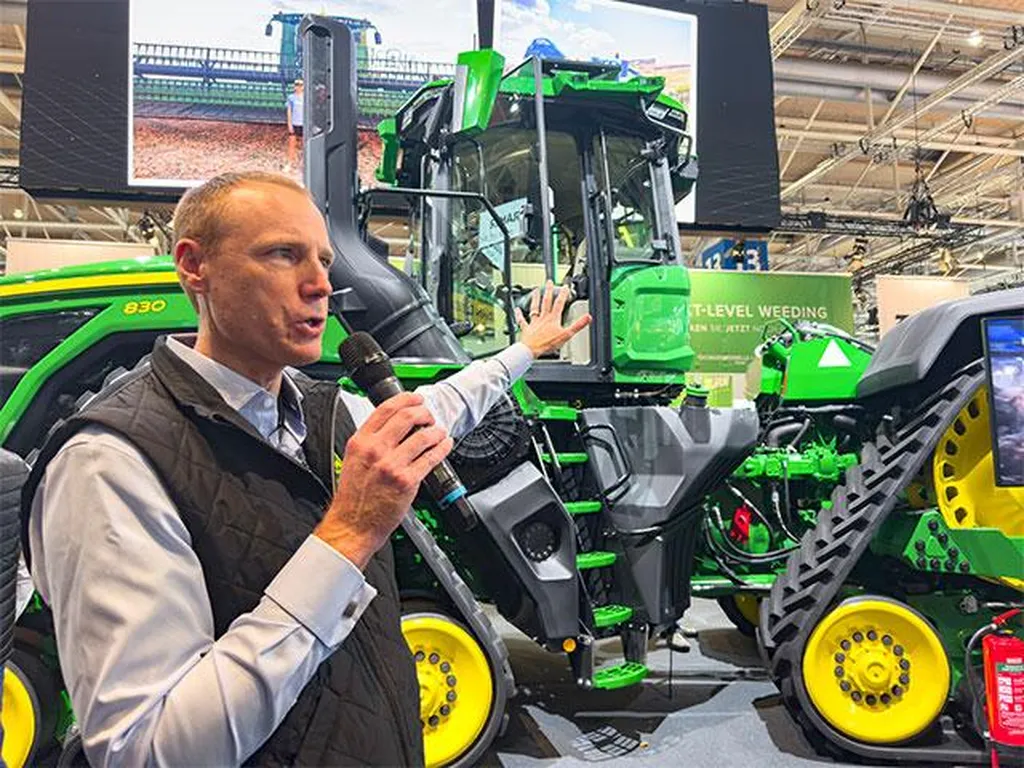In the ever-evolving landscape of the construction industry, Deere & Company stands as a bellwether, its fortunes closely tied to global economic currents and technological advancements. The recent upbeat analyst commentaries from UBS and RBC Capital, forecasting robust long-term earnings growth, have sparked renewed interest in the company’s investment case. These forecasts are underpinned by strengthened international trade relationships, new machinery deals, and China’s pledge to buy U.S. soybeans, all of which bode well for Deere’s construction and agricultural machinery segments.
RBC Capital’s initiation of coverage is particularly noteworthy, as it underscores Deere’s global leadership, growing technology investments, and the momentum in its construction segment. This optimism is not unfounded. Deere has been at the forefront of integrating precision agriculture and automation technologies into its machinery, positioning itself as a leader in the digital transformation of the construction and agricultural sectors. The company’s technology ecosystem, which includes advanced data analytics, autonomous equipment, and IoT-enabled solutions, is seen as a key differentiator in an increasingly competitive market.
However, the path forward is not without its challenges. Analysts acknowledge near-term industry headwinds, including margin pressure from trade tensions and tough North American markets. The upcoming fourth-quarter 2025 earnings announcement, scheduled for November 26, will be a critical test of Deere’s ability to navigate these headwinds. Consensus expectations point to year-over-year declines in earnings per share, with attention focused on whether software-enabled sales can drive profitable revenue growth in the year ahead.
The broader context of Deere’s financial projections adds another layer of complexity. The company is projected to achieve $45.1 billion in revenue and $8.6 billion in earnings by 2028. This outlook requires a delicate balance: a 0.7% annual decline in revenue and a $3.4 billion increase in earnings from the current $5.2 billion. Achieving this will demand strategic maneuvering, particularly in light of elevated used equipment inventories and cautious sentiment in Deere’s core North American markets.
For investors, the narrative around Deere is multifaceted. The recent analyst upgrades highlight the company’s international business and digital ecosystem, but they also serve as a reminder of the cyclical nature of the industry. The construction sector, in particular, is sensitive to economic fluctuations, and Deere’s performance will be closely watched as an indicator of broader market trends.
Moreover, the range of fair value estimates for Deere, from US$430 to US$831, reflects the diversity of perspectives on the company’s future. This broad range contrasts with the renewed analyst focus on short-term earnings uncertainty, prompting investors to consider multiple viewpoints before weighing Deere’s outlook.
In this dynamic environment, the construction industry is at a crossroads. The integration of advanced technologies, the push for sustainability, and the need for resilient infrastructure are reshaping the sector. Deere’s ability to navigate these trends will be crucial not only for its own growth but also for the broader industry. As the company prepares to report its fourth-quarter earnings, all eyes will be on its ability to balance short-term challenges with long-term opportunities, setting the stage for the next chapter in the construction and agricultural machinery narrative.

